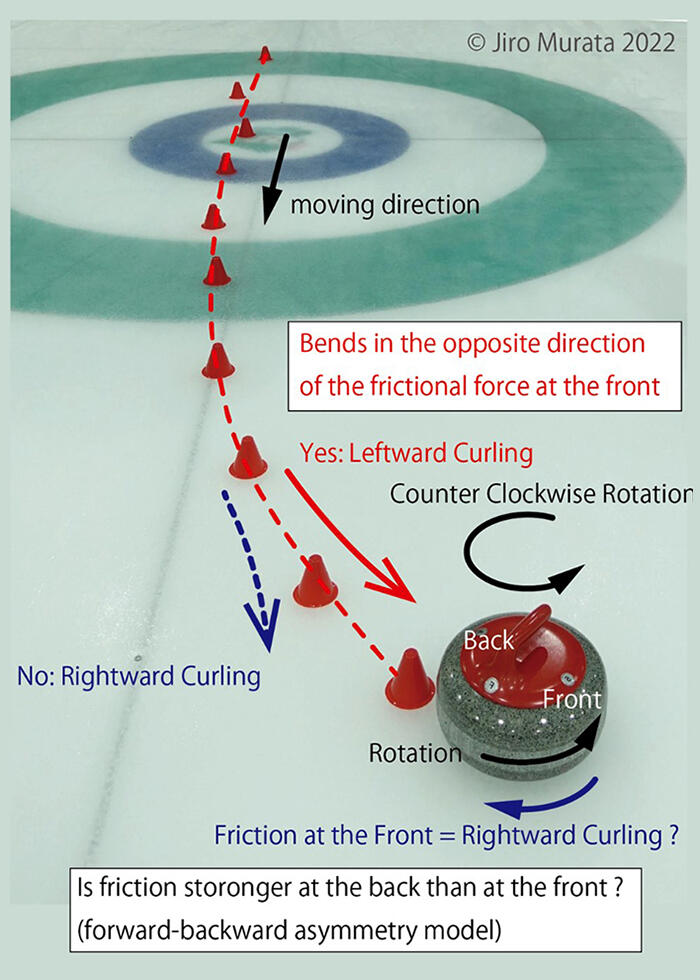Professor Jiro Murata of the College of Science, Rikkyo University, has succeeded for the first time in experimentally solving, through precise image analysis, why the stones used in the sport of curling curl to the left in the direction of travel when they are rotated counterclockwise. This has been a mystery for 98 years. "I wondered about how the stones curled when I watched the sport on TV. When I realized that this was an unsolved problem, I started by accurately measuring the trajectory," explains Professor Murata.

Provided by Jiro Murata, Rikkyo University
Several hypotheses have been proposed about this mystery. First, the left-right asymmetry theory states that the frictional force is different between the right side and the left side of a stone because they have different speeds, so the faster side melts the ice due to frictional heat and reduces friction. The forward-backward asymmetry theory also states that a stone touches the ice with a narrow ring-shaped contact surface made on the underside, but the friction is stronger on the backward side than the frontward side for some reason.
The grooving/scratching theory, in which a stone tracks on a projection on its underside that catches on the ice surface, has been the subject of heated debate among the two sides.
In his research, Professor Murata measured the behavior of stones at the micrometer level for the first time in the world with an image-processing displacement sensor (patented technology), which was developed for experiments to verify the law of universal gravitation on a micrometer scale with the purpose of searching for higher-dimensional spaces of four or more dimensions.
As a result, Professor Murata was able to observe phenomena such as the underside of the stones engaging and turning like gears with the ice. He was also able to precisely measure that the coefficient of kinetic friction increases as the speed slows, which causes the probability of the formation of a frictional fulcrum that causes curling to differ between the left and right sides of the stone.
These discoveries experimentally proved that the center of rotation is asymmetrically formed by the velocity dependence on the dynamic friction coefficient. This is the most plausible conclusion to answer the mystery. In addition, by examining the distribution of the position of the turning center, Dr. Murata also found that, contrary to what the forward-backward asymmetry theory claims, friction is stronger in the front than in the back, as he posited. He did not simply observe the motion, but he confirmed that the energy and angular momentum of the motion and rotation in the direction of travel are conserved, allowing him to correctly observe the physical phenomenon and reach a credible conclusion.
"In the future, I would like to consider filling in the blanks in the general treatment of systems involving frictional forces in rigid body dynamics, which has been an indirect cause of my long-standing struggles," says Professor Murata. "I am also already moving away from physics to conduct engineering research to support the competitiveness of curling tournaments, and I hope to work with athletes to achieve something useful."
Journal Information
Publication: Scientific Reports 12, 15047 (2022)
Title: Study of curling mechanism by precision kinematic measurements of curling stone's motion
DOI: 10.1038/s41598-022-19303-4
This article has been translated by JST with permission from The Science News Ltd.(https://sci-news.co.jp/). Unauthorized reproduction of the article and photographs is prohibited.




